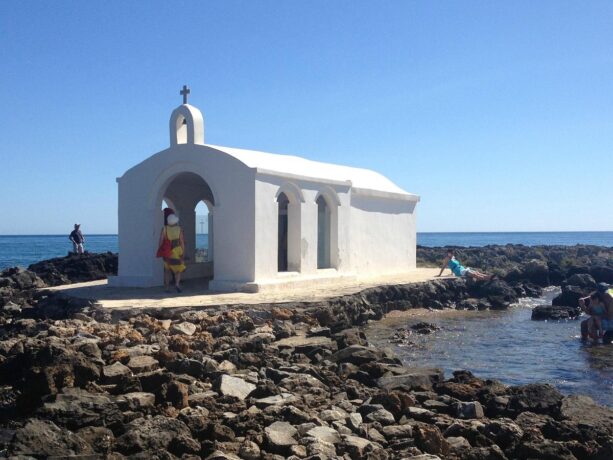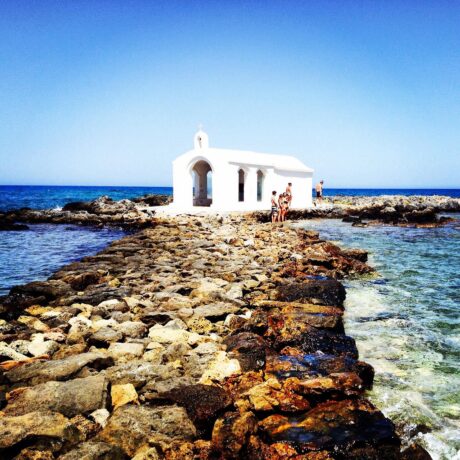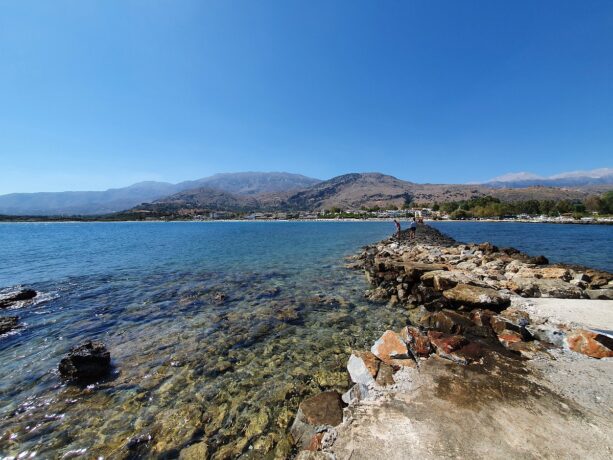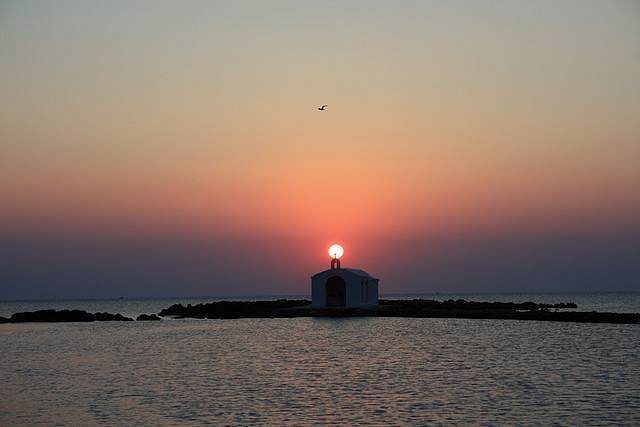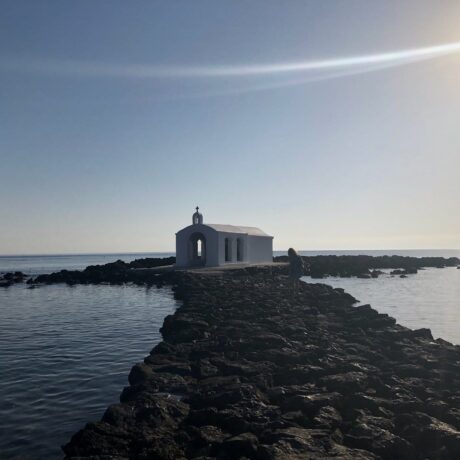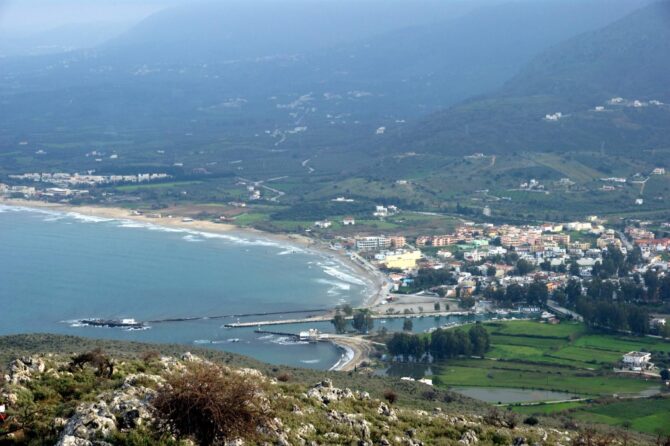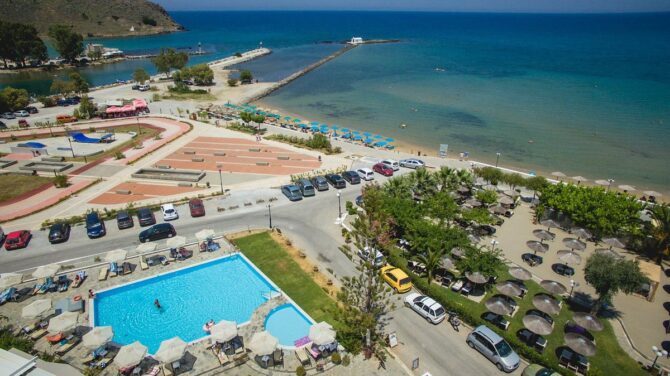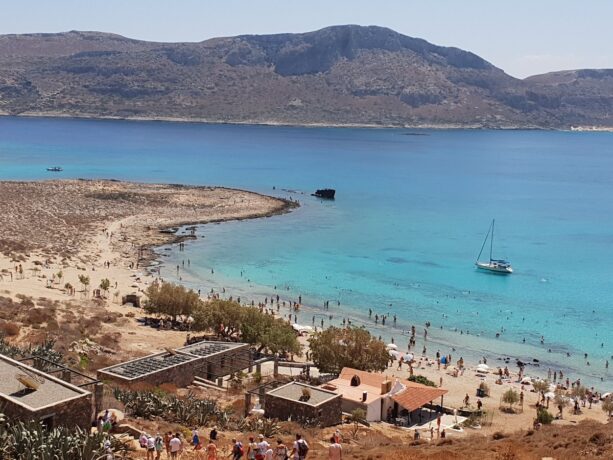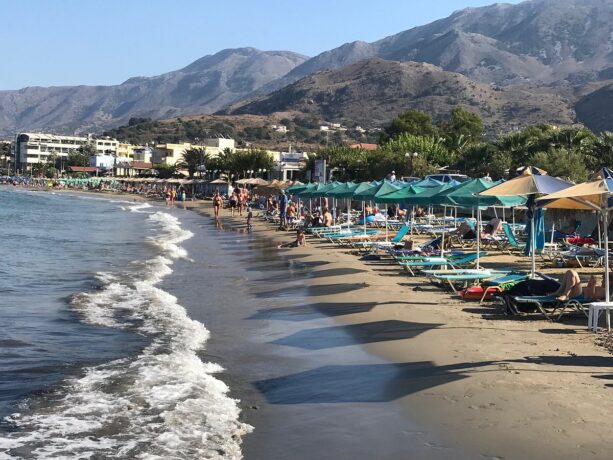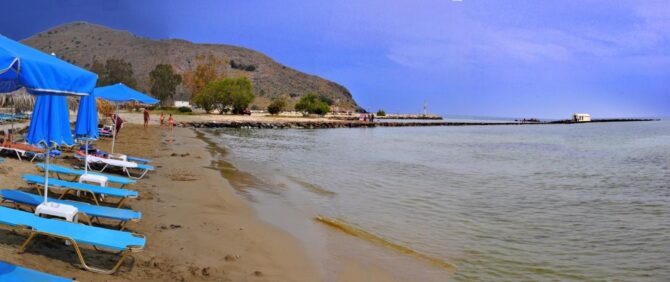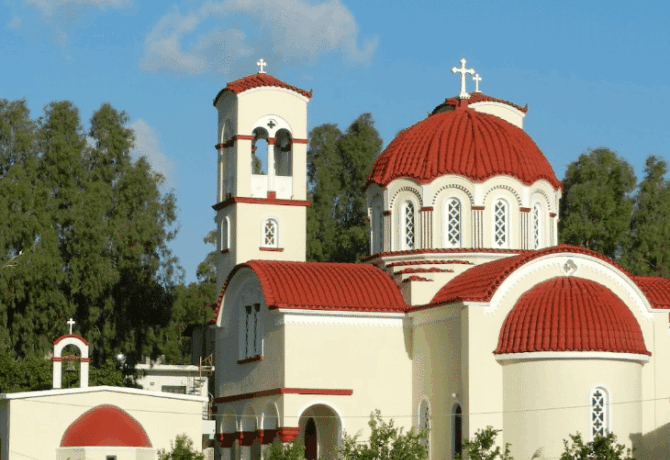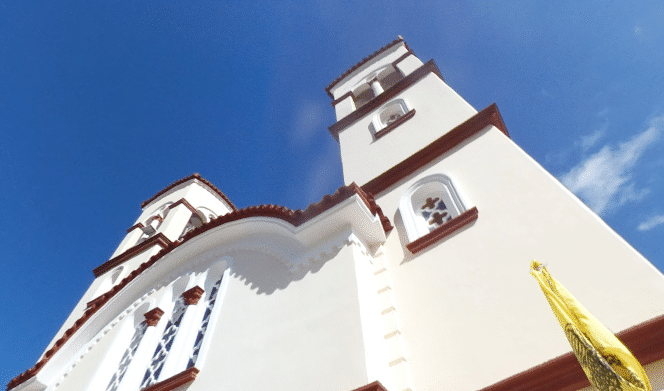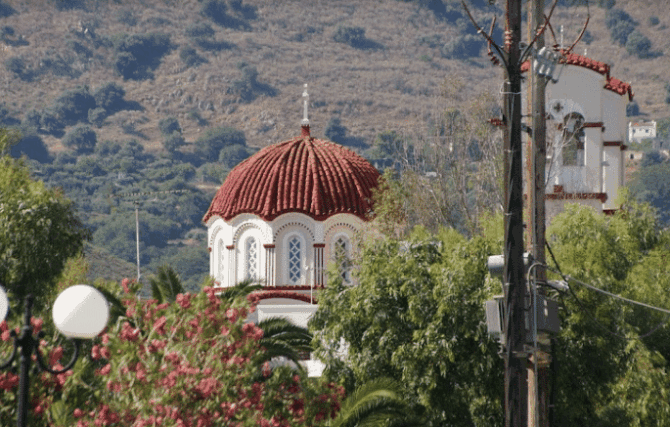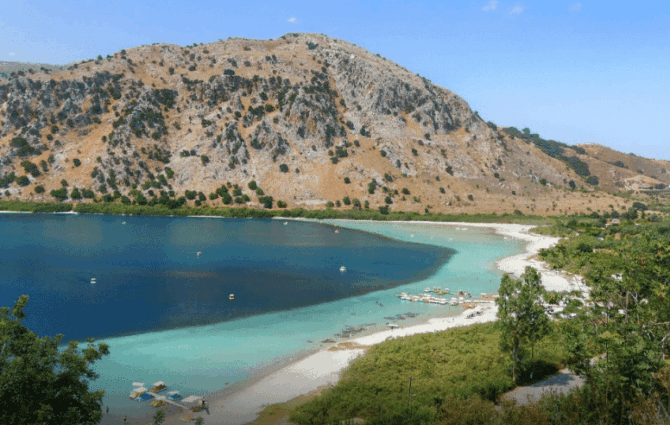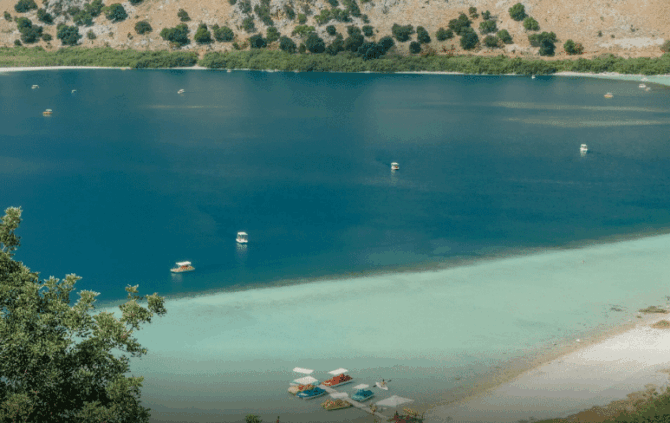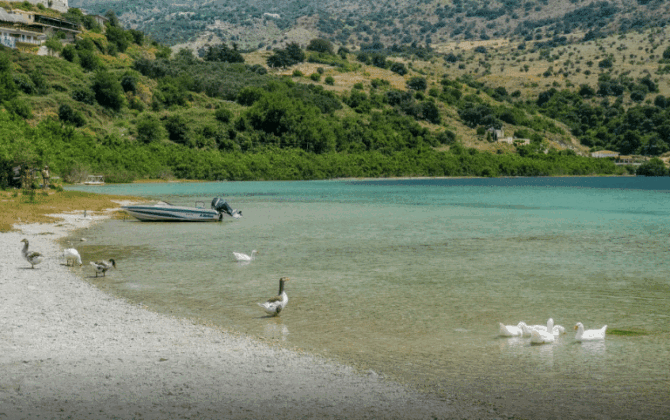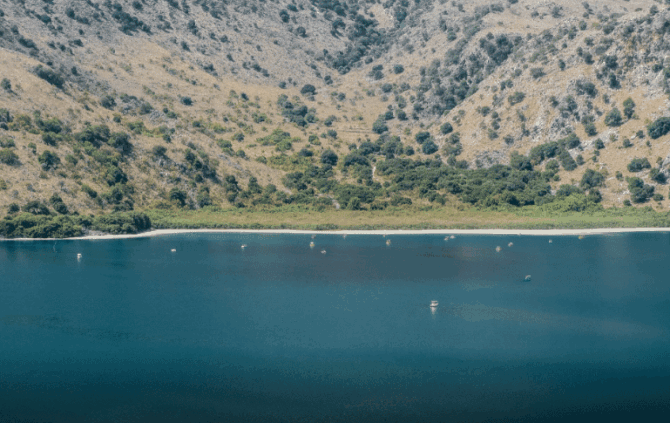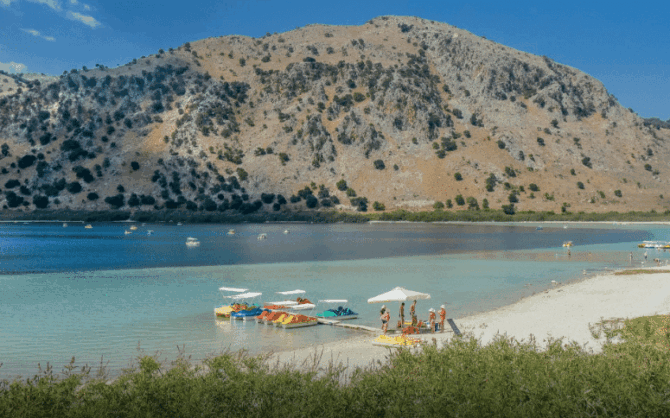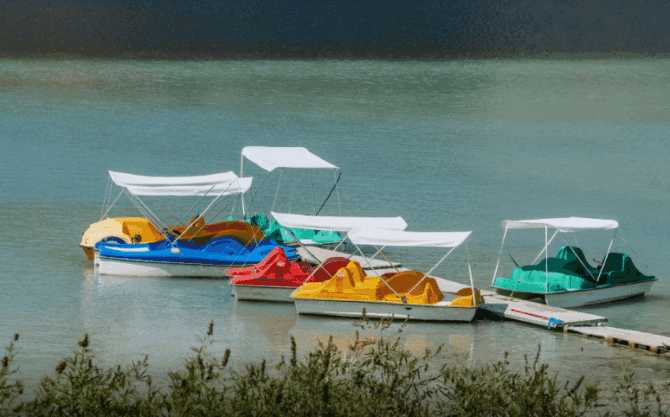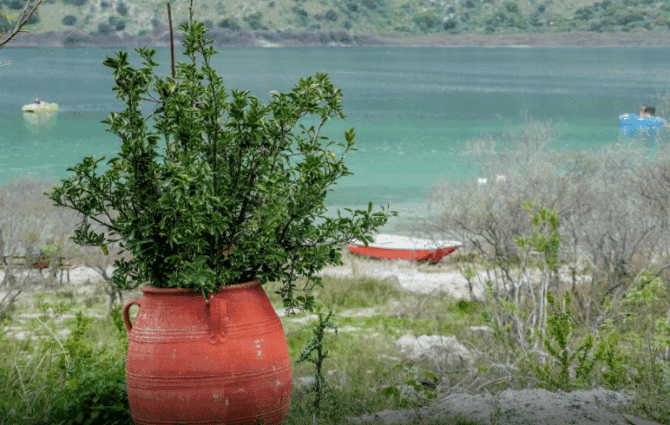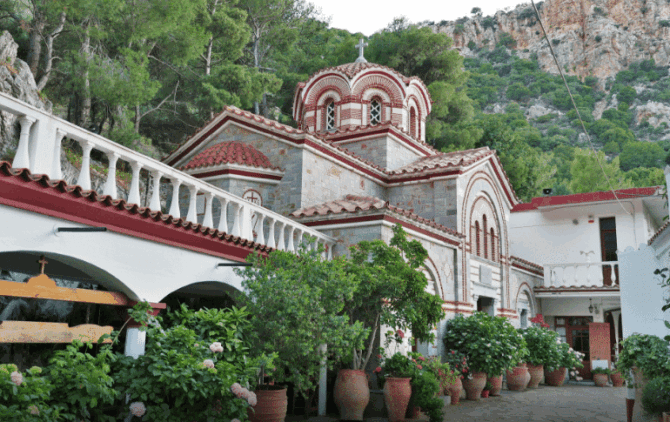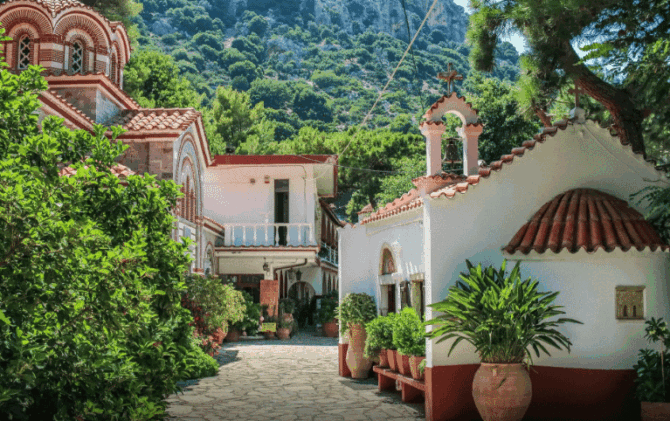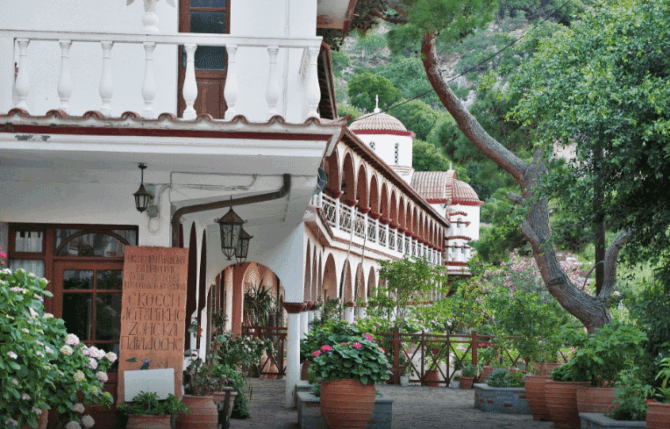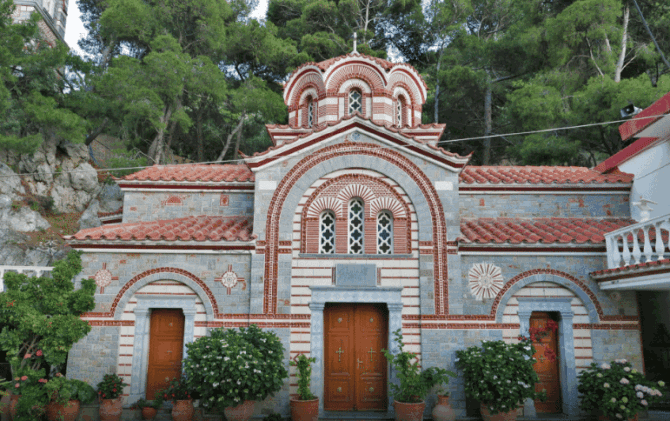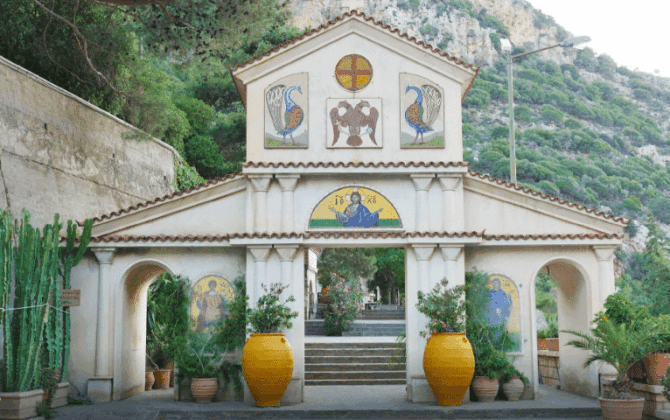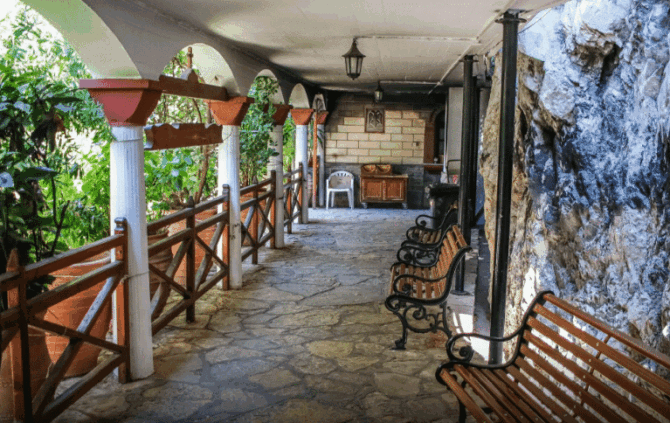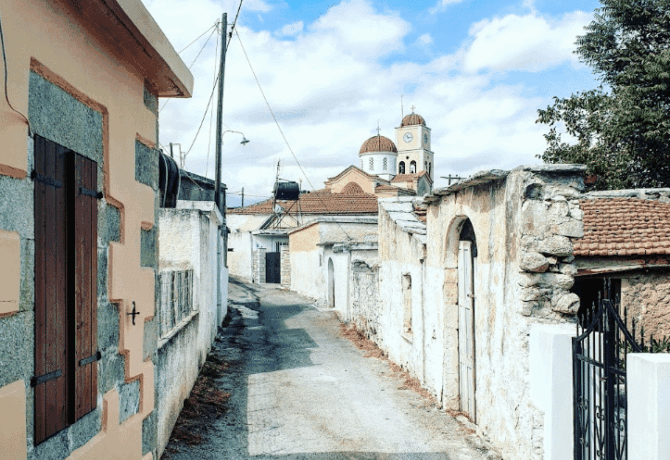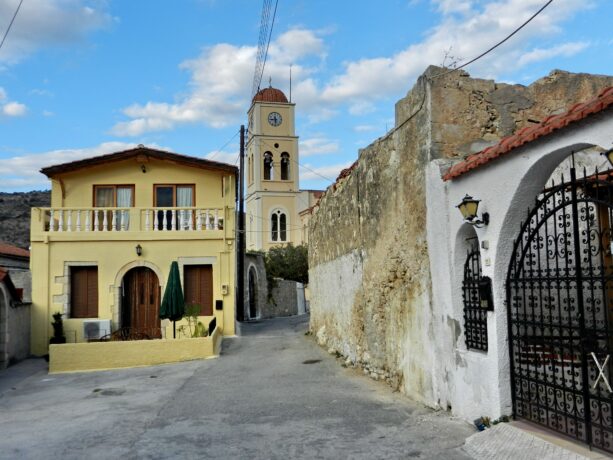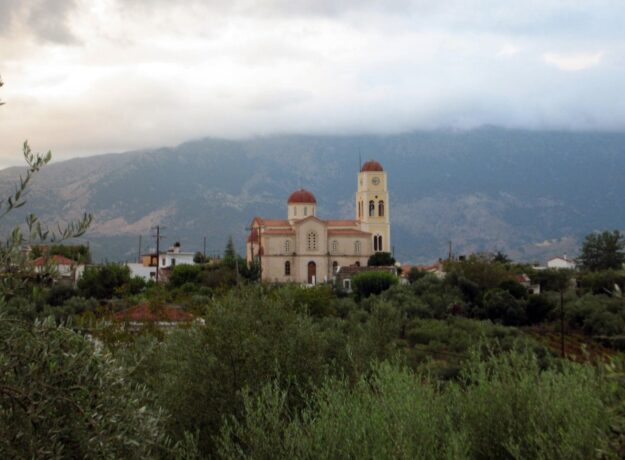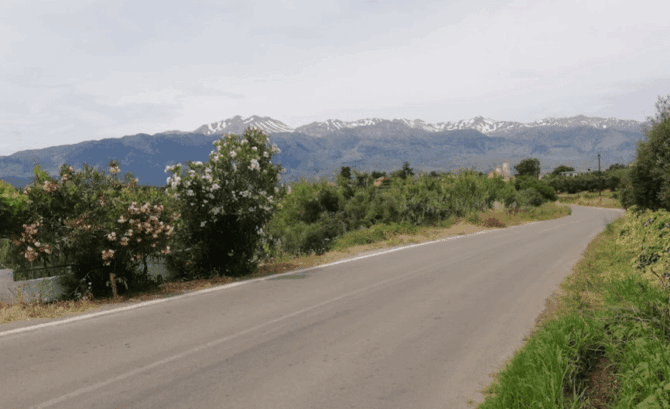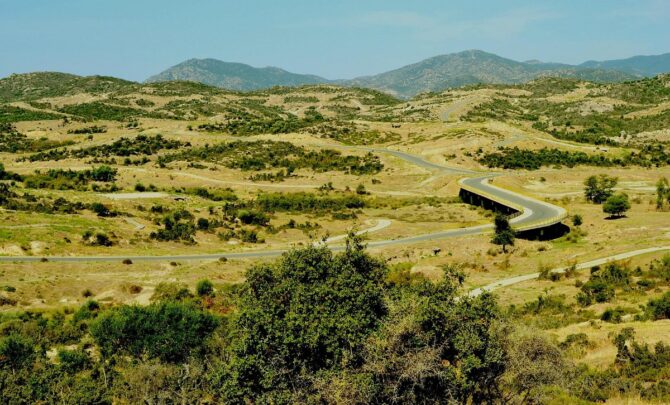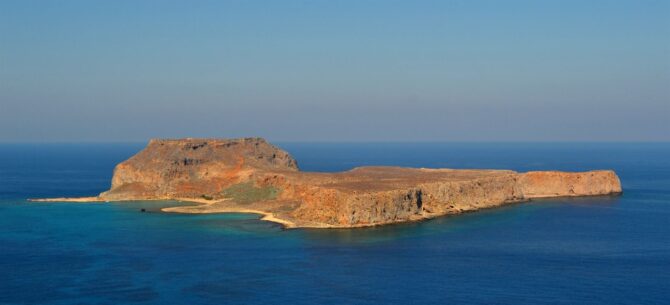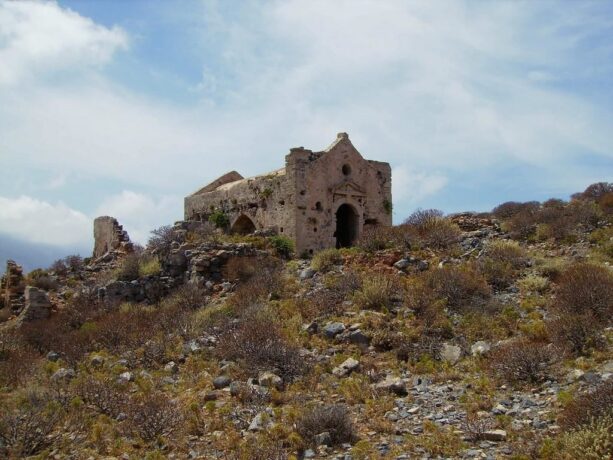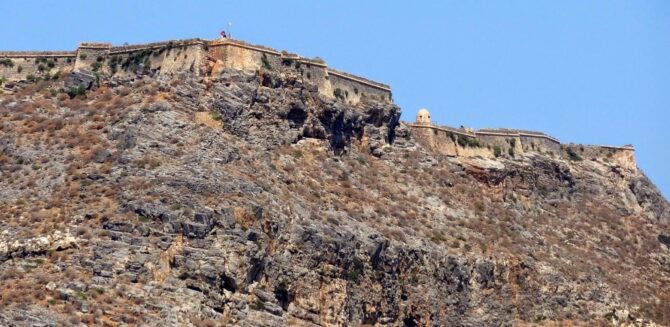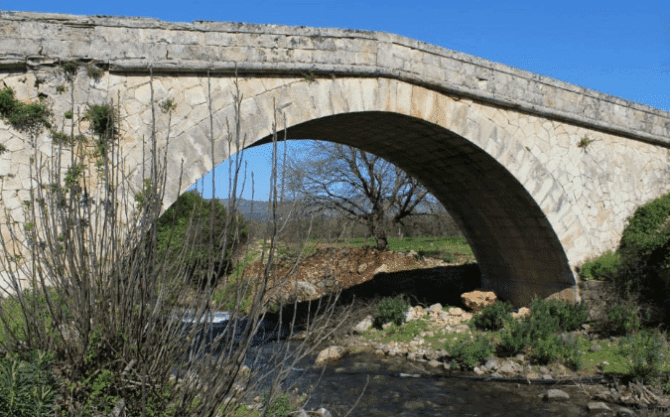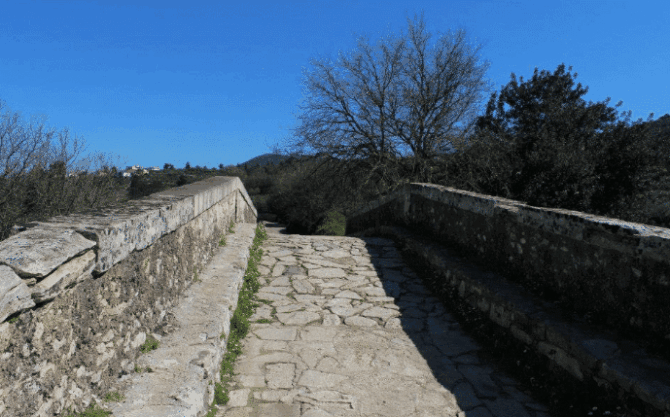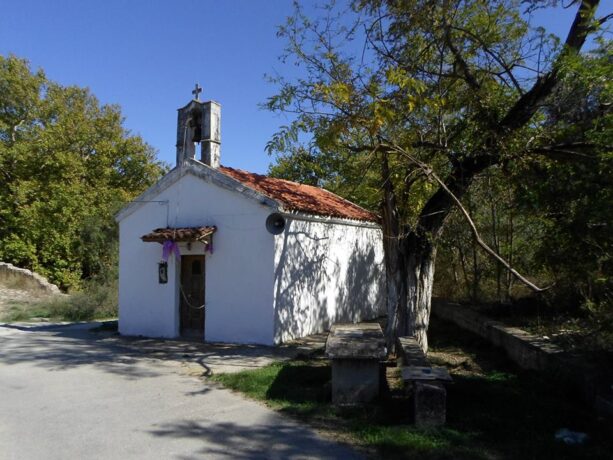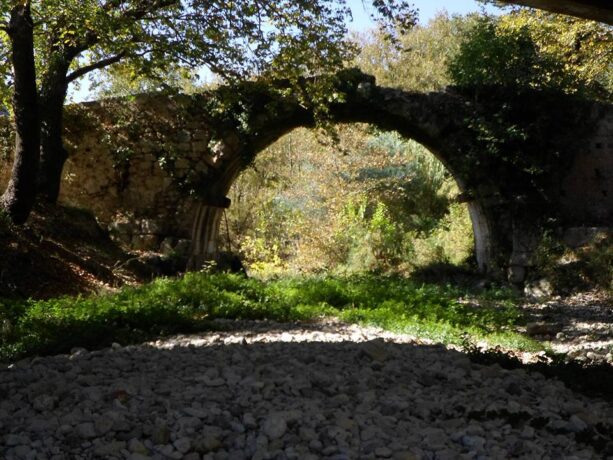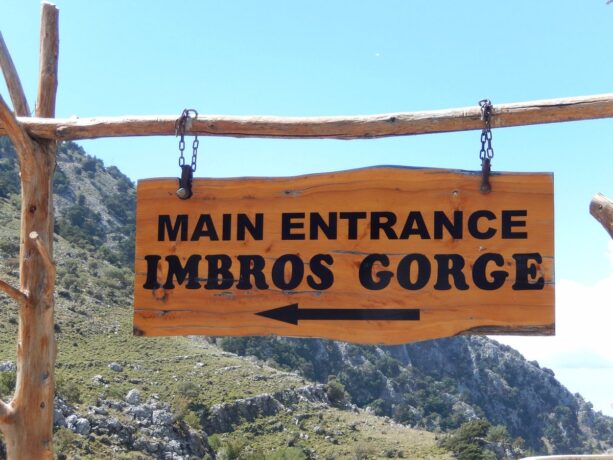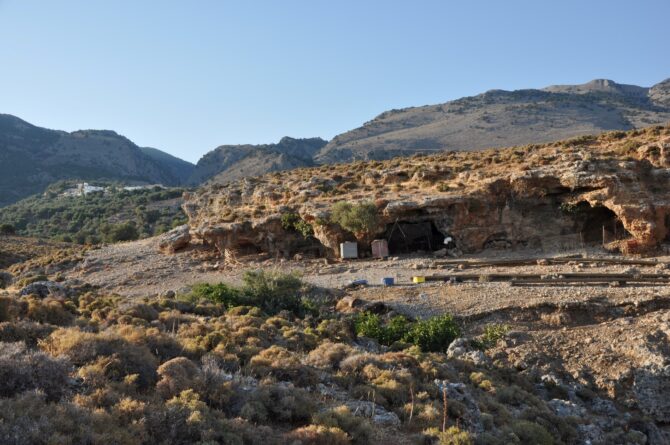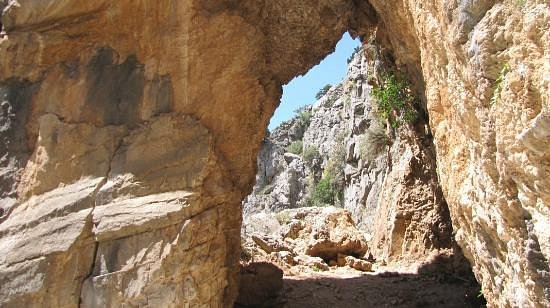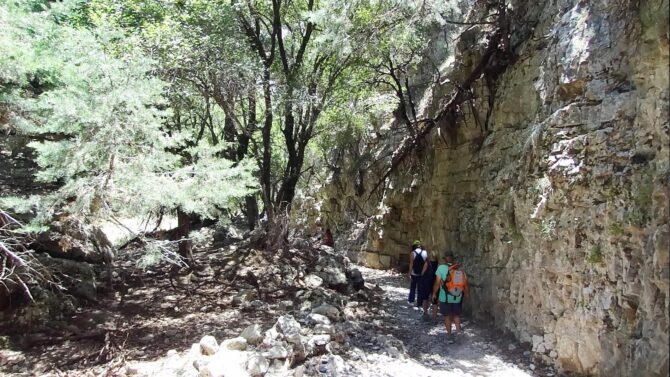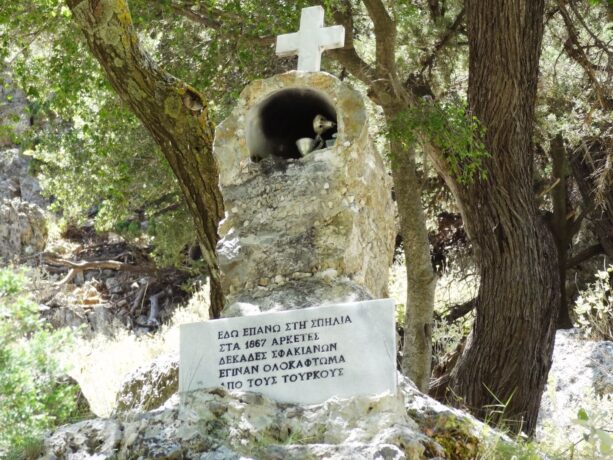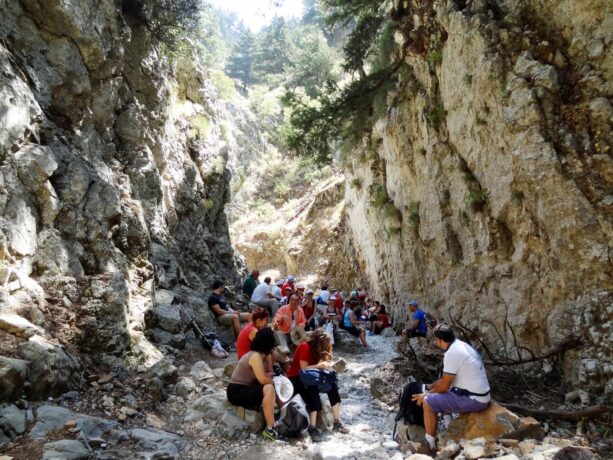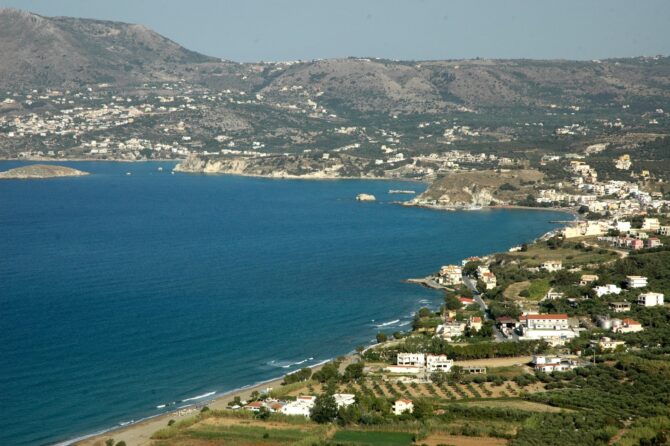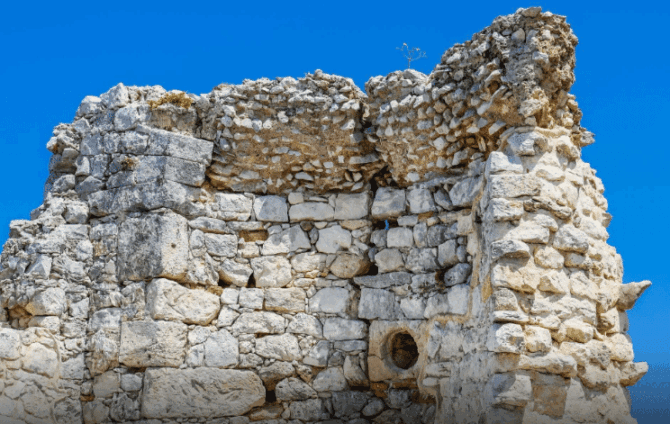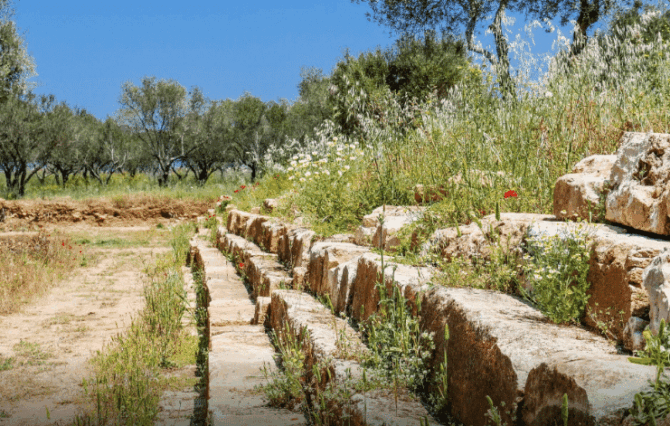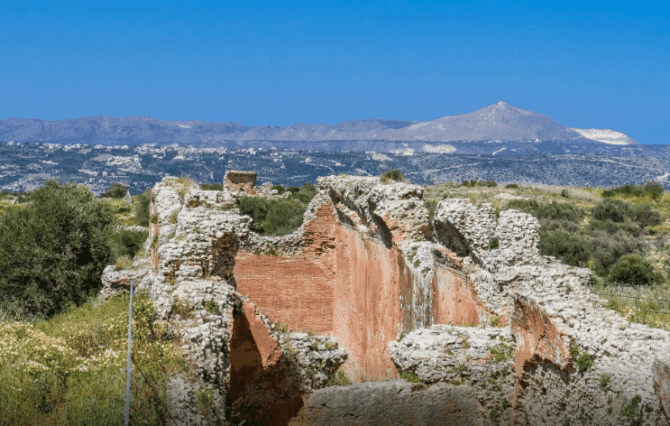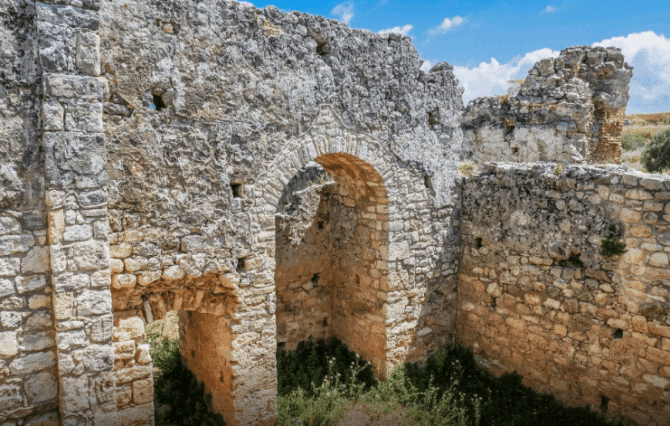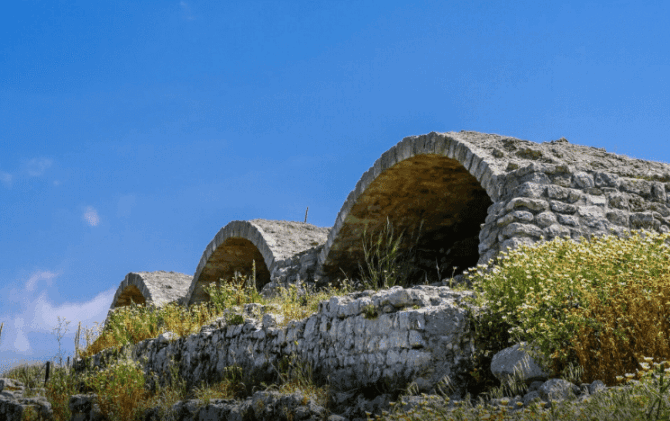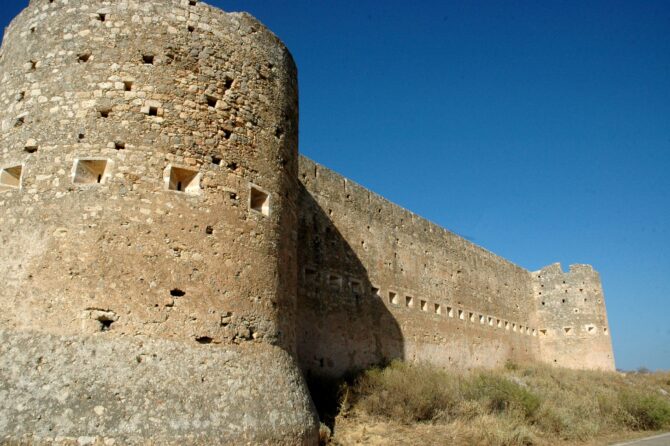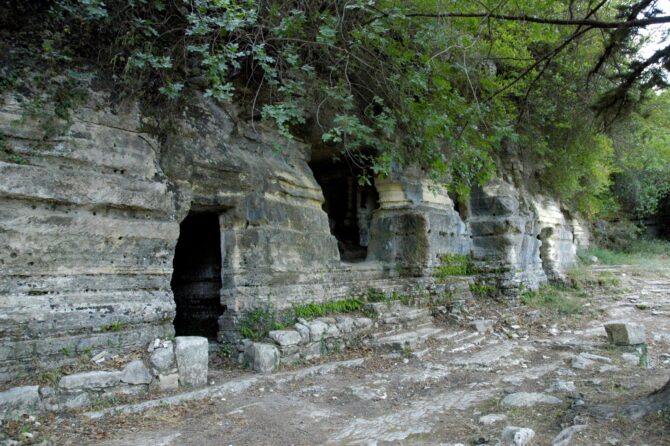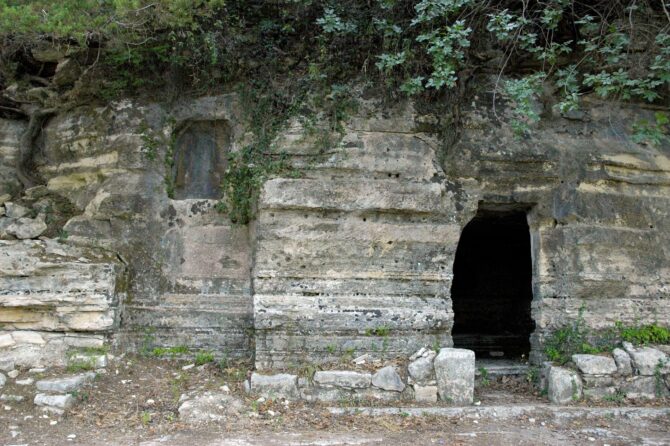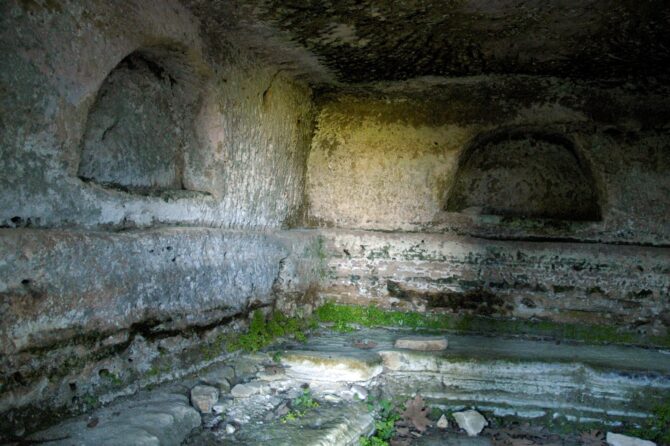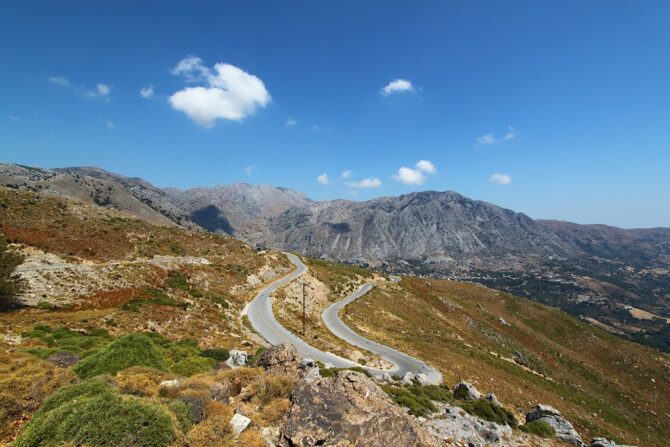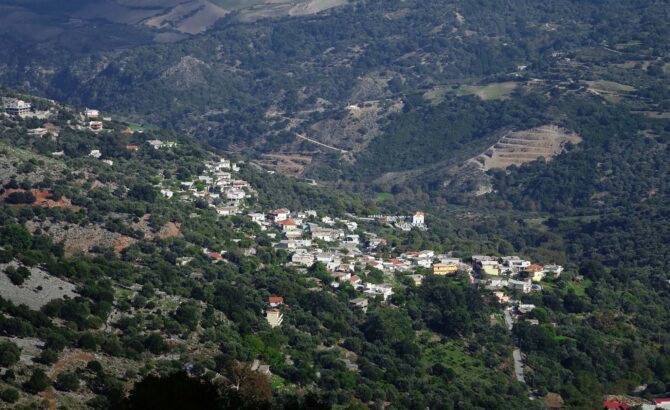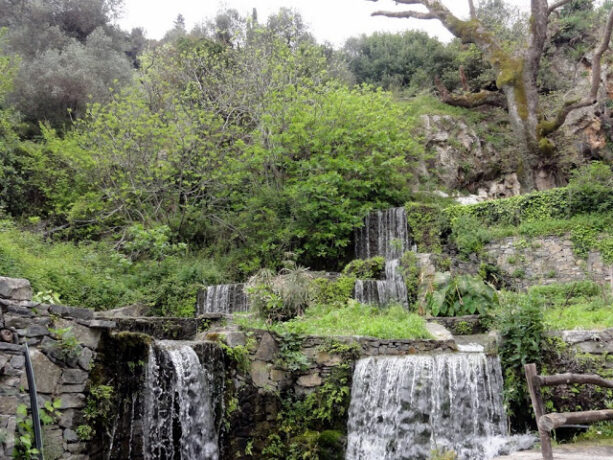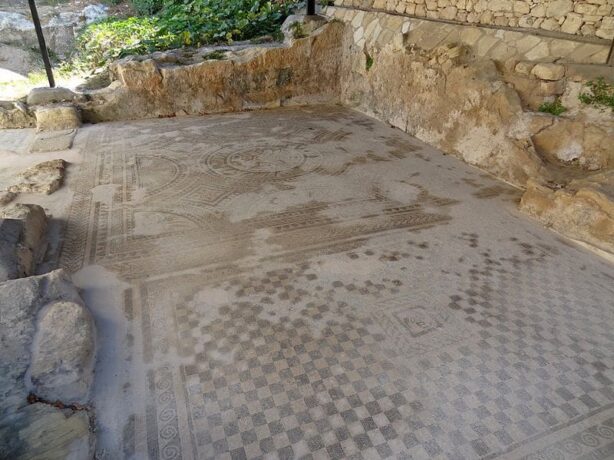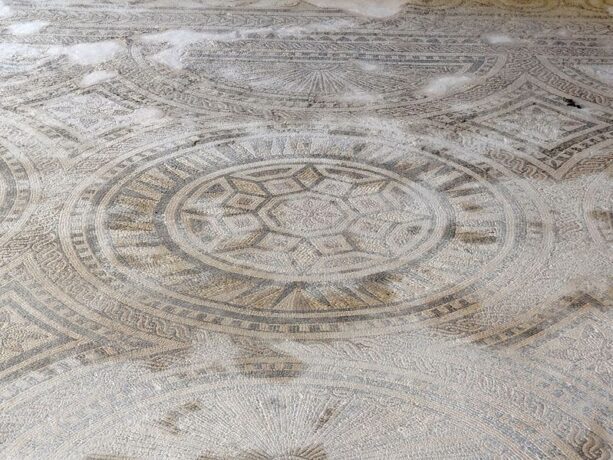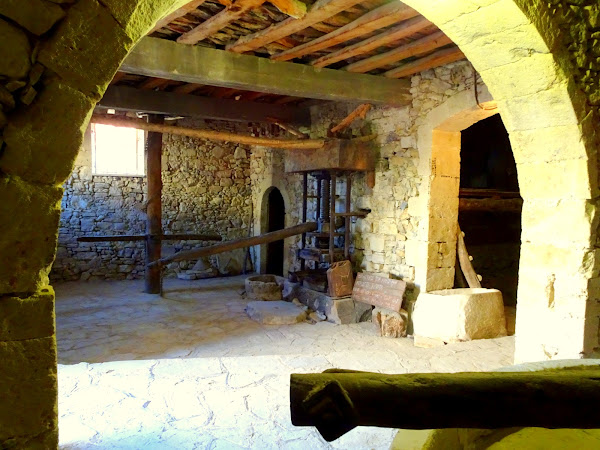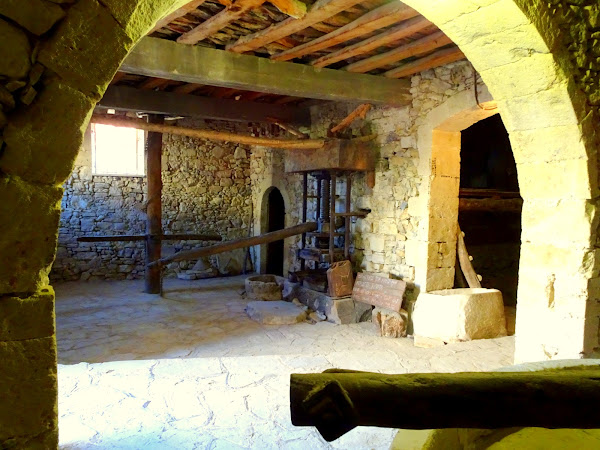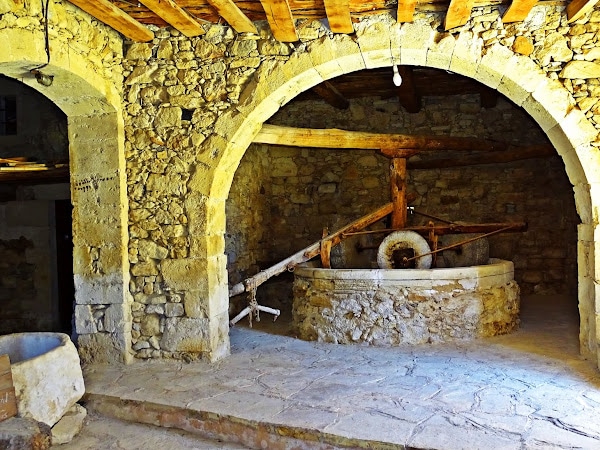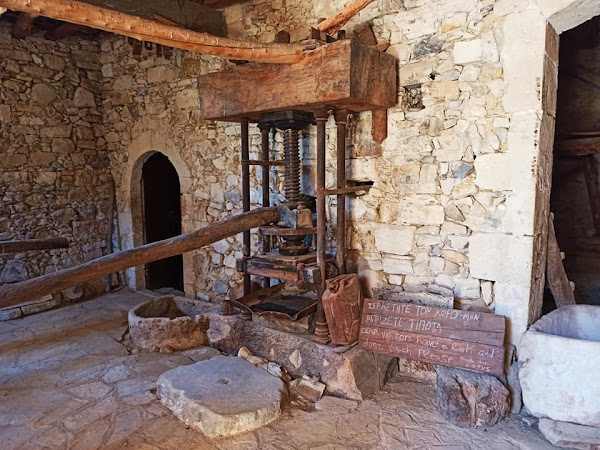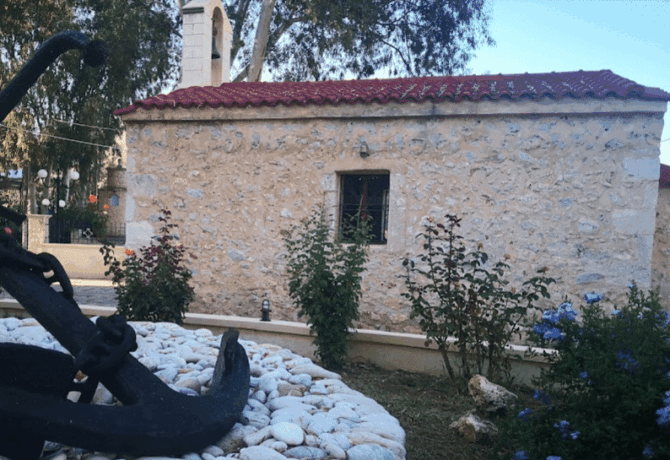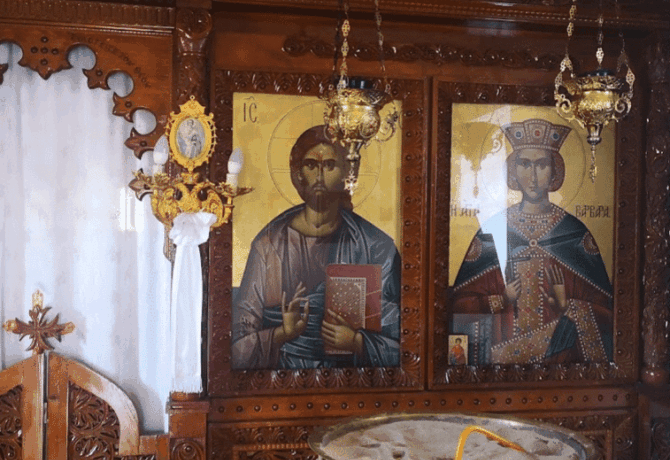About 23 km west of Rethymno (the nearest major seaside resort) and 100 km from Heraklion (the main city of picturesque Crete) is Georgioupolis – a village with a population of less than 1 thousand people. The village is named after George. This name is well known to the Greeks. George, a member of the royal family, served as High Commissioner to the Cretan State from 1898 to 1906, which existed on the world map from 1898 to 1913.
Since the 1970s, Georgioupolis began to develop rapidly as a seaside resort. Now, in [y], in the village and its immediate surroundings, the doors of 103 hotels, as well as 67 cafes, taverns and restaurants are open for guests. Thousands of numerous tourists from Europe come to the town for a pleasant pastime and leisure on a 9-kilometer sandy beach.
The Mediterranean climate, characteristic of the resort, contributes to the fact that sea water in the summer months warms up to + 23.1 … + 26.5, air – up to + 26.9 … + 29.8. Despite the crowds of tourists, the nature of the surroundings of the resort remained almost untouched. Georgioupolis, as well as the towns and villages of the region of the same name, are rich in historical monuments and sacred structures, to which foreign tourists show sincere interest.
- 1 Attractions Georgioupolis on map
- 2 Chapel of St. Nicholas
- 3 Georgioupolis Embankment
- 4 Ascension Church
- 5 Lake Kournas
- 6 Monastery of St. George
- 7 Mountain village kalamitsi Alexandru
- 8 Gramvous Islands
- 9 Vrieses Village
- 10 Imbros Gorge
- 11 Ancient Aptera
- 12 Argyroupoli village, ruins of ancient Lappa
- 13 Olive Oil Production Museum
- 14 Church of St. Barbara
Attractions Georgioupolis on map
Chapel of St. Nicholas
In the middle of the last century, a small one-story temple appeared in Georgioupolis, which became the decoration of the village. The chapel of St. Nicholas is located in the western part of the village on a tiny platform at the end of a 210-meter pier, built of stones and boulders. The height of the temple is 5 meters. The inner hall, decorated with a modest iconostasis, candles and lamps, can accommodate up to 10 people.
Here is also stored the shrine of the sacred structure – the icon of Nicholas the Wonderworker. The main features of the architectural style of the chapel are asceticism, modesty and lack of decor. Despite the proximity of the sea, even in bad weather, when the waves make it difficult to get to the temple, silence and tranquility reign inside the structure. For those wishing to leave donations in the chapel there is a small box.
The roof of the white-stone sacred building is decorated with a tiny belfry, crowned with a Latin cross. Often next to the chapel you can see the newlyweds arranging photo shoots. The most suitable time to visit the temple is sunny windless days. However, it is worth considering that it is in such weather that the number of people wishing to get into the inner hall is the most numerous. Admission to the chapel is free.
Address: Kolpos Almirou, Greece
Georgioupolis Embankment
Every street of the picturesque resort, where subtropical trees, shrubs and flowers grow everywhere, seems to be waiting for lovers of leisurely walks. However, the most suitable place for this type of pleasant pastime is the embankment of Georgioupolis, stretching for 530 m.
On sunny summer days, it is always crowded. At the same time, the embankment can not be called noisy, since most tourists prefer to relax at tables in numerous cafes, taverns and bars. Among the gastronomic establishments, seven leaders stand out, offering delicious fish and seafood dishes:
- Port café;
- Tropicana;
- Corissia Park;
- Summertime;
- Cotton Club;
- Armonia.
The embankment is decorated with pots with flowers, elegant lampposts and comfortable benches. Both adult tourists and children are happy to ride on colorful trains on wheels. Three or four cars of a popular vehicle are always filled with cheerful passengers.
Along the long promenade, starting next to the Tropicana restaurant and ending at the harbor, many fishing boats are scattered. Tourists willingly rent them for boat trips. Many vacationers go from the harbor on excursions on yachts and boats.
Between the promenade and the sea stretches a strip of landscaped sandy beaches. This place is suitable for leisurely walks and pleasant pastime only during the summer season, when thousands of foreign tourists rest at the resort.
The address of the resort promenade: Georgioupolis 730 07
Ascension Church
133 m from the sea coast and 480 m from the chapel of St. Nicholas stands the newly built building of the Ascension Church. Thanks to two high belfry towers, a light brown facade and a large central dome, the church gives the impression of a majestic structure. A solemn view is also created with the help of four light columns standing at the entrance to the temple.
The main dome and roofs of the bell towers are topped with small Latin crosses. The inner hall is a spacious room lit by beautiful chandeliers. The painted vault, the rich iconostasis and many candles – all this creates a solemn atmosphere. In the churchyard, decorated with flowers and shrubs, you can sit on comfortable benches.
The doors of the church are open daily from 7 a.m. to 6 p.m. In summer, the temple works for an hour longer. Locals and tourists visit the sacred building at any time of the year.
The address of the Ascension Church: Apokornos 730 07.
Lake Kournas
Relatively small Crete is rich in natural sites that cause sincere interest among foreign tourists. One of them is located 3.27 km southeast of Georgioupolis. This is the famous Kournas – a freshwater lake located near the White Mountains – so you can translate the Greek name Lefka-Ori.
The coastline of the reservoir exceeds 3.5 km. The greatest depth is 25 m. The total area of the lake is 1.2 sq. km. For a long period, scientists have been arguing about the origin of the natural reservoir. Most experts are inclined to conclude that the lake arose as a result of the partial collapse of the underground cave.
For the first time the reservoir is mentioned in the works of Stephen of Byzantium in the VI century BC. e. The ancient Greek philosopher calls it Coresia. The lake was named after the temple of Athena of Korea. Now Kournas is part of a protected area strictly protected by the state. Among the inhabitants of the lake are most often found:
- loaves;
- cormorants;
- ducks;
- turtles;
- Herons.
In late summer and autumn, many migratory birds fly to the reservoir. Here you can see more than 260 species of birds. In July and August, the water in Kournas warms up to + 25. Along the eastern shore stretches a well-equipped sandy beach. In summer, hundreds of tanning and swimming lovers gather here.
For vacationers, the doors of three rental offices are open, where you can rent a boat or catamaran. The cost of the service in [y] is from 7 to 15 euros. Sun loungers are provided free of charge. Tourists are happy to get acquainted with the taste of traditional Cretan dishes in taverns and restaurants located by the lake:
- Greek;
- The Beautiful Lake;
- Kavalos;
- Ambrosia;
- Athitis;
- Oneiro;
- Georgia’s.
On the shore of the reservoir there are doors of several souvenir shops, villas and hotels. There are also two free parking lots. Most tourists tend to visit the lake in the warm season. Travelers usually get to the reservoir as part of excursions. Motorists drive from Georgioupolis on the Epar road. Od. Georgioupolis Kournas. The distance they cover is 4.8 km.
Some travelers get from Georgioupolis on a small walking train. The cost of a ticket for one passenger in [y] is 10 euros. This unusual transport transports tourists from 9 am to 3 pm.
Monastery of St. George
9.2 km east of Georgioupolis are the buildings of a small monastery of St. George. The church of the monastery was built on the territory of the possessions of Francesco Barozzi – a Venetian nobleman – at the beginning of the XVII century. Since 1829, a factory for the production of olive oil began to work at the monastery.
The Ottoman Turks, who came to these parts in the second half of the XIX century, tried to turn the Orthodox monastery into a mosque. After they left, for many years the monastery was in an abandoned state. Restoration work was carried out from 1989 to 1996.
Now visitors see several restored buildings and the Church of St. George, the roof of which is decorated with a small belfry with two bells. From the factory for the production of olive oil there are 4 oil mills. They’re all valid. The rest of the structures of the once flourishing production are ruins.
From Georgioupolis, motorists drive to the monastery on the road leading to the village of Vrieses. Then they turn north and continue on to the monastery. It is best to visit this sacred place from May to October. For the entrance to the territory of the monastery you must pay 2 euros.
Address: Monastery Agios Georgios in Karydi of Apokoronos 730 08, Greece
Mountain village kalamitsi Alexandru
Travelers who want to plunge into the life of a typical Cretan village should definitely visit Kalamitsi Alexandru. This quiet picturesque village is located 3.86 east of Georgioupolos. Among the attractions of the village there are several of the most interesting objects:
- St. George’s Chapel;
- the central square with an active ancient well;
- monument to I. Alifirakis – the Greek fighter for the independence of Crete;
- an old elementary school, where life was bubbling in the 1930s;
- Cathedral of the Holy Trinity.
For those tourists who are starved, the doors of two taverns are open to Kalamitsi Alexandru: “Kolimpos” and “Piperaki”. From Georgiouprolis, travelers get to the village on one of two roads: Epar. Od. Kalivon–Georgioupolis or EO Chanion–Rethimnou (E-75). In the first case, it is necessary to overcome the distance of 7.0 km, in the second – 7.3 km. Following the E-75 road, after crossing the Almiros River, you need to turn north and continue to the village.
Village address: Kalamitsi Alexandrou 730 08
Gramvous Islands
“Leaky edge” – about this is how you can translate the word “Gramvusa” from the Venetian dialect of Italian. This is one of the existing versions explaining the name that two islands received: Agria-Gramvousa and Imeri-Gramvous. The first of them is located to the north, the second – to the south. Imeri Gramvoussa is located 1100 m from the coast of Crete. Agria-Gramvousa – 816 m. Distance from Georgioupolis to Imeri Gramvous – 67 km.
Now both islands are uninhabited. However, they were not always like that. In 1579, the Venetians began the construction of a powerful fortress designed to protect the Cretan ports from the Ottoman Turks. The construction of the citadel ended in 1584 Since 1691, the islands began to belong to the Turks, who ran here for 130 years. From 1821 to 1828, Imeri-Gramvous became the center of activity of Greek pirates who attacked Egyptian, Turkish and European ships.
Since 1831, the islands ceased to play an important strategic role and became uninhabited. Now before the numerous tourists visiting Imeri-Gramvous, the remains of an ancient fortress appear. The citadel has the shape of a triangle with powerful walls, each of which stretches for 1 thousand meters.
Tourists come to Imeri Gramvous to explore the ancient fortress. The citadel, located at an altitude of 137 m, plays the role of a spacious observation deck, from where history buffs look at the seascapes and the ship that sank in 1980 near the shore for a long time.
Agria-Gramvousa does not attract crowds of inquisitive travelers. There are no historical monuments or fortifications. However, the island is home to several species of birds. The path to Agria-Gramvusa is difficult due to the many underwater rocks located close to the shore.
Imeri Gramvous is also home to birds. There are over 100 species of birds on the island. In addition to the fortress, you can see a small chapel here. Travelers get to Imeri Gramvous by ferry from Kissamos, the Cretan port. The cost of a ticket for one passenger in [y] is 27 euros, for children – 13 euros.
Fans of independent trips get on the road going to the port, passing by the city of Chania. Tourists will have to overcome the distance of 69 km.
Islands address: Kissamos 734 00
Vrieses Village
To plunge into the life of the traditional village of Crete, tourists should go to Vrieses, located near Geogrioupolis. In the past, three full-flowing rivers flowed through Vrieses. Now it’s just one stream. In winter, it turns into a river that can be crossed by wooden bridges. The village is known to tourists for the production of several products;
- goat cheese;
- olive oil;
- yogurt;
- mountain honey;
- Ice cream.
Vrieses has a population of about 750 people. In the summer months, the population increases by 1.5-2 times thanks to tourists. Guests of the village come here not only to try local delicacies, but also to see the sights:
- ancient church;
- ancient basilica;
- the stone Greek Arch is an ancient bridge built more than 2 thousand years ago.
It is worth coming to the village in the warmer months. It is at this time that you can sit at tables in local cafes and taverns and enjoy the unhurried rhythm of life. Among the most popular are several gastronomic establishments of Vrieses:
- Kontaros;
- Two Brothers;
- Platia Vrison;
- Steki Tou Kapri.
Georgioupolis is easily accessible to Vrieses via the E-75 national road. After passing along it 4.5 km, after the Armiros River, you need to turn onto the Chanion-Rethimnou road and overcome another 1 km.
Village address: Vryses 730 07
Imbros Gorge
The beauty of Cretan nature annually attracts thousands of travelers from Europe to the picturesque island. One of the most interesting places is the Gorge of Imbros, located on the territory of the municipality of Sfakia. Its length is 11 km. Before the construction of the road between Chora-Sfakion and Chania, the locals used the gorge to get from the southern coast of Crete to the north.
About 8 km of the gorge are available to visit. To walk along the trail, tourists will need from 2 to 3 hours. Before visiting, lovers of hiking should certainly stock up on water, take warm clothes with you and use comfortable shoes without heels. In some places, the height of the gorge exceeds 300 m. The average width is 2 m. At the very end of the gorge becomes very narrow.
The entrance is located near the village of Imbros. This is usually where the route begins. The height at which the entrance is located is 780 m. Moving along the gorge, travelers will meet on their way a very different vegetation covering the slopes of the rocks:
- oaks;
- ficus;
- agave;
- chestnuts;
- cypresses;
- pines and other trees and shrubs.
The exit from the gorge, which is a narrow stone arch, is located near the village of Komitades. For those travelers who are tired, the doors of several small taverns are open here. A spacious parking lot is available near the exit.
Connoisseurs advise to visit the Gorge of Imbros in the spring, when the local vegetation pleases with a riot of colors. The hike is best started in the morning. Nature lovers should take into account that most tourists accumulate in the gorge in April.
The distance from Georgioupolis to the entrance to the gorge is 28.3 km. Motorists overcome this path on the E-75 road. Before reaching Vrieses, you need to turn onto the road Vruson-Choras Sfakion. Thus, you can get to the entrance to the gorge. Travelers who prefer public transport should take any bus from Chania towards Chora Sfakion.
Entrance to the gorge for those who are more than 15 years old, paid. The cost of the service is 2.5 euros.
Address: Hora Sfakion 730 11
Ancient Aptera
Crete, like all of Greece, is rich in places associated with ancient history. Ancient Aptera is one of them. On the territory of the former ancient city, excavations are still being carried out. Archaeologists argue about the time of the foundation of Aptera. Some scientists argue that the ancient city already existed in the XIV-XIII centuries BC. e. Only it was located slightly away from the site of modern excavations.
Most archaeologists consider the time of the foundation of the ancient city of the VIII-VII centuries BC. e. It was he who was at the excavation site. In the history of ancient Aptera, three most important stages can be distinguished:
- IV–III centuries BC – the city reached its peak, turning into a shopping center with two seaports;
- VII century – there was a strong earthquake that significantly destroyed Aptera;
- 823 – the city was attacked by the Arabs, after which Aptera gradually fell into desolation.
Archaeologists managed to find many coins, vessels, household items belonging to different historical periods. Now visitors see the remains of several ancient buildings:
- amphitheater;
- Roman baths and cisterns;
- status buildings;
- the fortress wall, which had a length of 4 km;
- aqueducts;
- temple of Demeter.
Entrance to most of the territory of ancient Aptera is possible only from 8:30 to 15:00. The ticket price is 2 euros. The most suitable period for a visit to this place is spring, early summer and autumn. Visitors also see later structures located next to the remains of ancient Aptera:
- Itzedin (another spelling – Izzeddin) – a well-preserved fortress, built by the Turks on the coast in 1872; initially the citadel performed fortification functions, then for a long period was a prison; now the fortress is abandoned and inaccessible for tourists; occasionally concerts are held in the yard;
- in the XI century on the territory of the ancient city were erected the buildings of the monastery of John the Theologian; the sacred complex existed for quite a long time – until 1962; today you can see the abandoned buildings of the monastery;
- The Turkish Fort is a massive castle erected on the northwestern outskirts of the ancient city in the 1860s; standing next to this majestic structure, tourists look at the picturesque Souda for a long time – the bay located below; the inner halls of the fort are not accessible.
To get from Georgioupolis to ancient Aptera, you need to cover a distance of 27.8 km. Motorists are driving on the E-75 National Road towards Chania. At Akrimios Tavern, turn left and continue through the villages of Kalami, Zacharias and Kafes. To the archaeological site and the territory of the ancient city are signs with the inscription Ancient Aptera.
Address of ancient Aptera: Megala Chorafia Souda 730 03
Argyroupoli village, ruins of ancient Lappa
About 16 km south-east of Grigorioupolis is an interesting place for tourists – “Silver City”. Argyroupoli is a compact village located on the slopes of a low hill. A little more than 400 people live here.
In the ancient period, this place was Located Lappa – a Greek city that survived the heyday in the II-I centuries BC. e. In 68 BC. e. it was conquered by the Romans. However, this did not prevent the city from experiencing a revival and existing from 31 BC. e. until 824 Lappa was destroyed and ravaged by Arab conquerors.
A few hundred years later, on the site of the ancient city, a village appeared, which changed its names. Under the Turks, this place was known as Kalamatos. Since 1822, the modern name Argyroupoli appeared on the maps. In 1878, a fateful event took place in the village. Here was officially announced the accession of Crete to Greece. Now Argyroupoli is a small mountain village, which tourists visit for the sake of several interesting objects:
- picturesque waterfalls;
- Museum of Cretan Culture, where household items of local residents are collected;
- sycamore, which is more than 2 thousand years old;
- springs in which sturgeon and trout are found;
- Church of the Five Holy Virgins.
Near the village, scientists conduct many years of archaeological excavations at the site where ancient Lappa existed. Experts managed to find many antique figurines, coins, amphorae and even the remains of the Roman necropolis. Little has survived from the ancient city. However, history buffs inspect with interest the remains of the foundation and walls of ancient buildings.
The way to Argyroupoli from Georgioupolis is on the road going towards Rethymno. Tourists need to turn right at the village of Paralya Qurna and go through Dramia, Episkopi Retiminon and Archontica. The distance to be traveled is 15.4 km. The best time to travel is the warmer months.
Village address: Argyroupoli, Rethymno 661 00
Olive Oil Production Museum
11 km west of Georgioupolis are the “possessions” of the Museum for the production of olive oil. Visiting this place will be useful and interesting not only for tourists who are fond of the history of Cretan crafts. In the halls of the museum you can see with your own eyes the equipment, mills, containers and much more that was used in the past for the production of olive oil.
Guides tell in detail about the history of this craft, its features, traditions and current state. If desired, tourists can buy olive oil in the shop on the territory of the museum. The restaurant opens its doors at 10:00. Access to the museum stops at 19:00. In winter – one hour earlier. Admission to the museum is free. Tourists visit this institution throughout the year.
To get to the museum from Georgioupolis, you can join the tour or drive. The route is on the E-75 road. After Vrieses, take the left and drive to the museum on the road Vrison-Vafe-Apokoronas.
Website: https://olive-oil-museum.business.site/
Address: Olive oil Museum, 730 07, Greece
Church of St. Barbara
Not far from the chapel of St. Nicholas, a few meters from the sea coast, the Church of St. Barbara “hid”. Around the temple, which is a small one-story building made of stone, stretches a high fence. Nearby is an unusual sculpture – a large anchor. The height of the monument dedicated to the sailors is about two times lower than the Church of St. Barbara.
In a small hall of the temple, which can simultaneously accommodate no more than 10 people, an iconostasis was built. The image of St. Barbara immediately catches the eye of all entering the room. On the roof of the church, next to which grow shrubs, a branching palm tree, a tall pine tree and other trees, you can see a bell and a small cross. Information about the history of the temple has not been preserved.
You can come to church at any time throughout the calendar year. Most tourists prefer to look into the temple on the warm days of summer, spring or autumn.
Church address: Georgioupoli 730 07
Georgioupolis is a village and resort for lovers of relaxation, Greek history and nature of Crete.
The leisurely rhythm of life, clean well-equipped beaches, friendly locals and excellent Cretan cuisine – all this awaits tourists who have chosen Georgioupolis for their summer holidays. The rest will become even more interesting and eventful, thanks to acquaintance with the sacred and natural objects of the resort surroundings. A visit to the villages located near the village will help to understand the peculiarities of rural life in Crete. Rest in Georgioupolis is suitable for a variety of tourists – from history lovers to fans of entertainment on the beaches.

